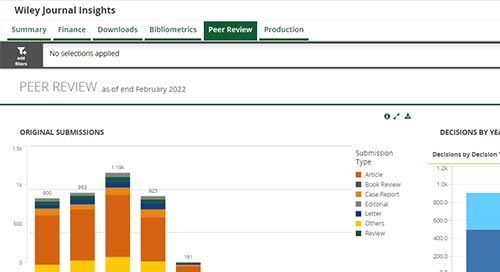what-are-marc-records
March 09, 2022
Have you ever tried to find a book at your local library? You go to the library’s webpage and access the online catalog. You try searching by title, author or keyword to find the desired work. You locate the call number, go to the stacks and pull the book off the shelf. Then you can check it out and start reading.
You may not realize it, but a MARC record made most of that possible.
Managing the online public access catalog (or OPAC) is an immense undertaking. And this work is done by library staff you may never meet. Libraries put considerable effort into making titles discoverable for their users so that collections can more effectively serve their community. Driving content discovery and access are an essential goal of libraries: and MARC records are how it happens.
MARC is an acronym for Machine Readable Cataloging. It defines a data format by which computers exchange, use, and interpret bibliographic information. Its data elements make up the foundation of most library OPACs used today.
After its development in the 1960s and adoption by the Library of Congress in 1971, MARC became the international data standard for bibliographic records. Libraries and research institutions around the world use MARC records to maintain holdings information. Think of each MARC record as an electronic version of a card in a library card catalog. Each title in the library collection will have its own MARC record, viewable to users through the OPAC.
While the MARC format was originally developed to facilitate the discovery and management of print books, today any content that is owned or accessible by a library can have a MARC record. The MARC format has been updated to better fits the evolving information needs of libraries and their users. This includes non-book resources, like CDs and magazines, and electronic resources, like e-books and journals.
If you’re curious to see what a MARC record actually looks like, you can visit the Library of Congress website for a few examples. Those who are familiar with code like HTML or XML may find this structure familiar. A MARC record is a piece of metadata, that has fields and subfields to convey information about content to help the user better understand and navigate their desired content. Some of the fields and data included in a MARC record are a work’s title, author, publisher, table of contents, book summaries, subject headings, and call numbers.
The importance of MARC records cannot be understated. For libraries, they are a critical mechanism for libraries to manage and share holdings information with users. Publishers, too, rely on the structure of MARC records: having a standard format to share information about published content helps publishers meet the metadata requirements of libraries and ensure that new materials are quickly and easily ingested into a library’s collection.
Although today MARC is the cornerstone of library holdings metadata, its days are numbered. While MARC storage formats have evolved over time to meet the current needs of libraries, they are still largely based on outdated technology. In 2012, the Library of Congress launched Bibliographic Framework (BIBFRAME) initiative, a linked data approach to information management that will eventually replace MARC. Although some prominent libraries have started their transition to BIBFRAME, a full transition will take many years. Until then, will MARC continue to be critical day-to-day library operations.
Institutions that purchase online books or reference from Wiley are entitled to receive free records through Wiley’s MARC partner the Online Computer Library Center (OCLC). More information for receiving MARC records can be found on the Wiley-OCLC MARC configuration web page.
This article is part of the series Research Distribution: Connecting Research to Readers.














